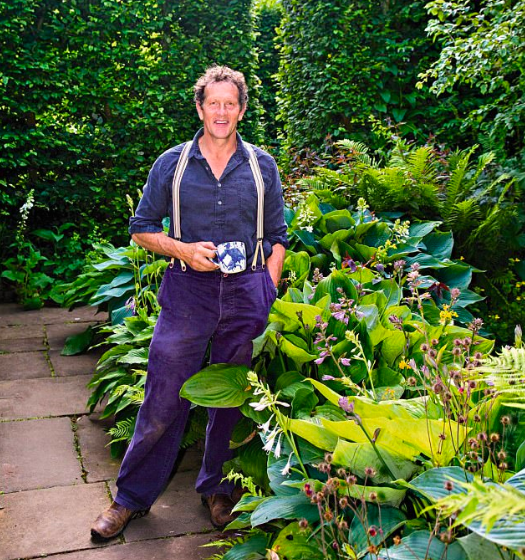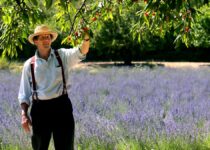Gardeners Beware! Monty Don Reveals the One Task You MUST Do in March
As winter slowly draws to a close and the promise of warmer days begins to emerge, gardening enthusiasts across the United Kingdom are eagerly preparing to revitalize their outdoor spaces. With spring just around the corner, now is the perfect time to implement essential gardening tasks to ensure a lush and thriving garden throughout the upcoming months.
Monty Don, the highly respected horticulturist and long-standing presenter of BBC’s Gardeners’ World, has emphasized the importance of taking early action in March to guarantee ‘vigorous new growth’ as temperatures steadily rise and daylight hours extend.
His invaluable gardening advice, shared through his monthly blog, provides a comprehensive guide to achieving a healthy and flourishing garden in spring.
Among his many expert recommendations, Monty highlights one crucial yet often overlooked task that gardeners should prioritize at the start of the season: mowing the lawn. According to the renowned gardening expert, properly cutting the grass in March is fundamental to maintaining its overall health. However, he warns against cutting it too short.

“The grass will need mowing in March but do not cut it too short,” Monty advises. “Just give it a light trim for the rest of this month. This will encourage good root growth and, as a result, the grass will be a lot healthier and better able to resist summer drought.”
Monty elaborates that cutting grass too short—commonly referred to as ‘scalping’—not only places undue stress on it but also weakens its resilience, making it more susceptible to diseases and bacterial infections that could lead to serious damage. The key to maintaining a strong, healthy lawn, he explains, lies in nurturing its roots and ensuring that it has the best possible growing conditions.
Rather than focusing on combating common lawn nuisances such as moss, ants, worm casts, dandelions, and even moles, Monty encourages gardeners to direct their energy towards cultivating robust and resilient grass. A well-maintained lawn, he reassures, will naturally suppress these issues and require far less intervention.
“If the grass is healthy, everything else will look after itself,”
Monty asserts.
For those who find their gardens overwhelmed with moss, Monty warns that this could be a sign of underlying issues such as poor drainage or excessive shade. To effectively address the problem, he recommends aerating the soil by inserting a garden fork into the ground at regular intervals and gently ‘wiggling it about.’
This simple yet effective technique should be repeated every six inches across the lawn. Once the soil has been adequately aerated, he advises filling the holes with a mixture comprising equal parts of sieved topsoil, sharp sand, and sieved leaf mould or compost.

This aeration and top-dressing method, Monty emphasizes, should be undertaken at least once a year for optimal results, ensuring that the lawn remains well-drained and aerated, which in turn promotes healthier grass growth.
Additionally, he provides further guidance on removing thatch and overwintering moss that may have accumulated during the colder months. To stimulate fresh, thick regrowth, he suggests raking the lawn vigorously with a wire rake, allowing light and water to penetrate the soil and nourish the grass roots.
“Give the lawn a good scratch with a wire rake and let light and water get to the soil and to the roots of the grass,”
he recommends.
“Put the debris on the compost and then mow. It will look a little bald for a week or so but will grow back thicker than ever.”
Beyond lawn care, Monty shares additional insights on essential spring gardening tasks. March, he explains, is an ideal time to begin planting and relocating various plants, provided that the soil is in the right condition.
“The only way to know this is by touch,” he advises. “Pick up a handful of earth. If it feels cold and clammy to the skin, then seeds will not germinate and roots will not grow. If it feels warm, holds together when squeezed, and yet can easily be crumbled, then it is ideal.”
Another critical practice Monty encourages is pruning. He underscores the importance of this technique in promoting healthy growth and maintaining the structure of trees and shrubs. As the final days of winter fade away, he advises gardeners to thoroughly assess their trees and shrubs, removing any dead or damaged branches to encourage vigorous new growth and enhance overall plant health.
“The first two weeks of March are the best time to begin pruning shrubs and climbers,” he states. “Gardeners should resist the temptation to prune during a mild February, as the regrowth can then be stunted by a late frost.”
Weeding is another task that should not be neglected, according to Monty. Taking the time to remove weeds early in the season prevents them from taking root and spreading, which in turn allows cultivated plants, flowers, and vegetables to flourish. Additionally, he highlights the importance of planting woody species of shrubs during this time, as they will establish more effectively in the warming soil.
Monty’s expert gardening guidance comes on the heels of a challenging period for him and his wife. The Gardeners’ World host recently shared that they were forced to remain indoors after being ‘flooded in’ during the month of January.
The horticulturist took to social media to share videos of the severe flooding that surrounded his beloved Longmeadow home in Herefordshire. Typically serving as the scenic backdrop for BBC’s Gardeners’ World, Monty’s iconic garden was instead completely submerged in water following relentless stormy weather conditions.
Despite the recent challenges, Monty remains dedicated to inspiring and educating gardening enthusiasts across the UK. His expert knowledge, combined with his passion for horticulture, continues to serve as an invaluable resource for those looking to cultivate vibrant and healthy gardens as the seasons change.
As spring approaches, following Monty’s tried-and-tested gardening wisdom will undoubtedly help both novice and experienced gardeners set the stage for a season of robust growth and natural beauty.


